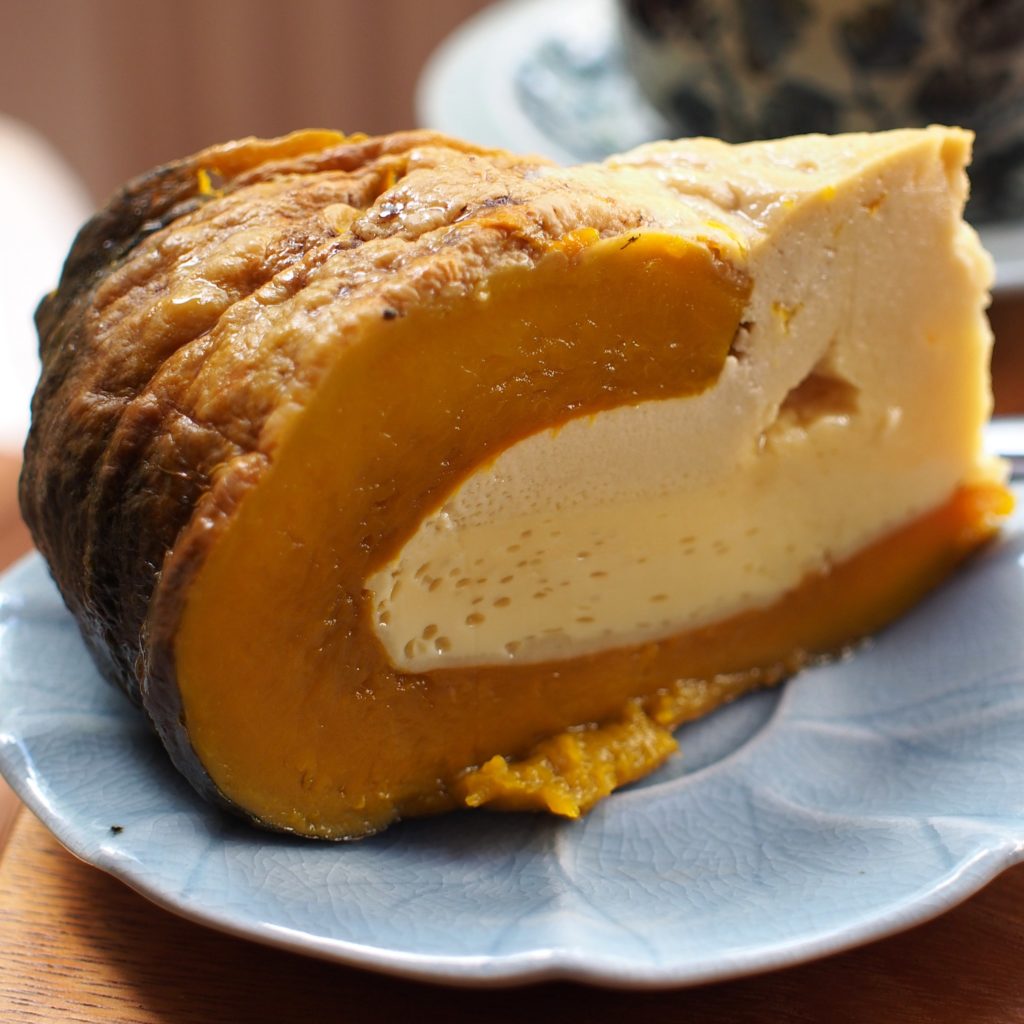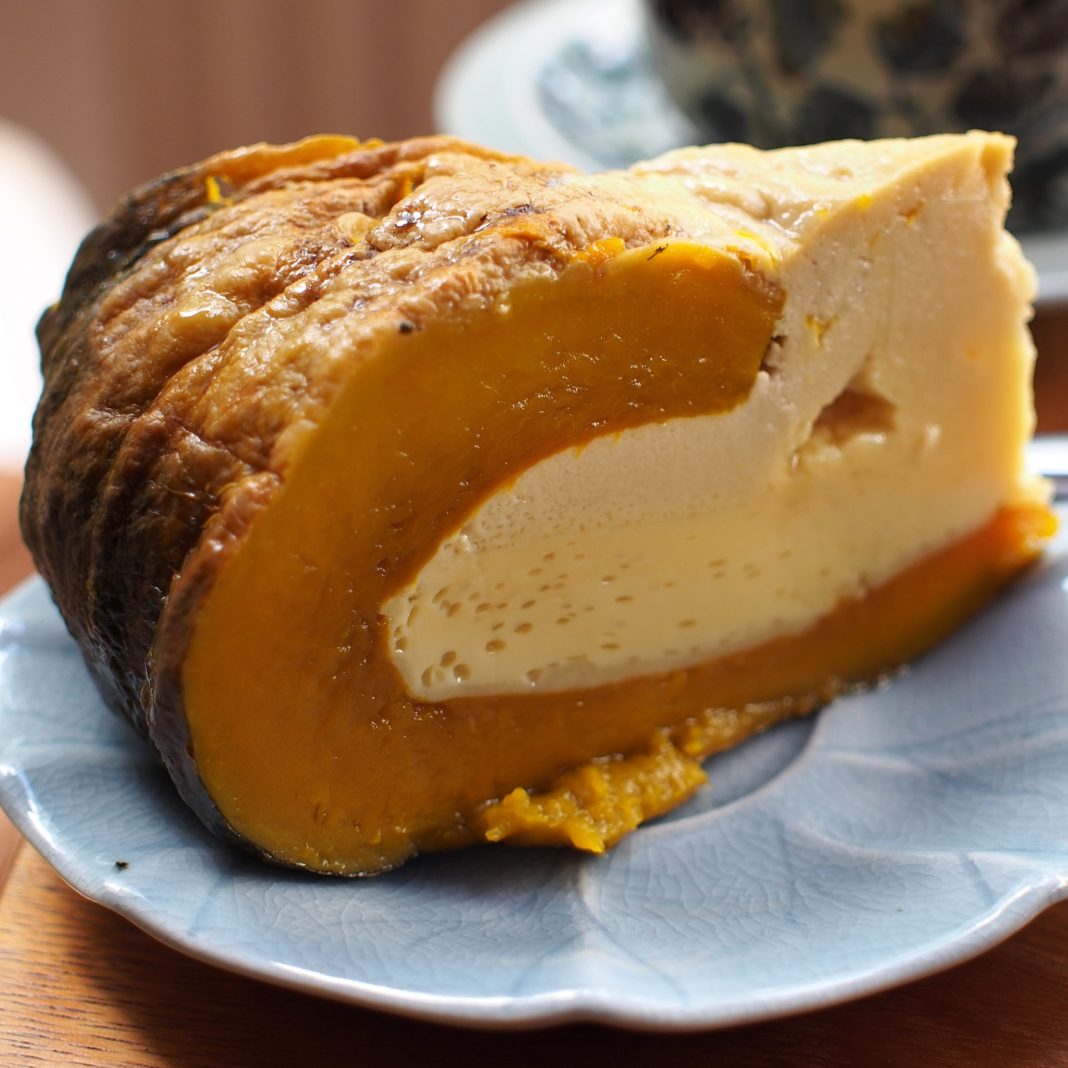1. Tumis labu kuning
Tumis labu kuning is a popular dish in Brunei, as well as in neighbouring Malaysia, Indonesia and Singapore.
Mushy with a spicy kick, this simple stir-fry uses sweet, nutty butternut pumpkin and pairs perfectly with white rice.
Cooking tumis labu kuning is a cinch – red chillies, shallots, garlic and dried shrimp or anchovies are pounded in a mortar to form a paste, which is then stir-fried on high heat until fragrant.
Diced pumpkin is then added into the mix, coated with the paste and seasoned with sugar and salt to taste.
2. Nom l’peouv
Nom l’peouv, a steamed pumpkin cake wrapped in banana leaf, is a common find in Cambodian markets.
Similar dishes are also found across the region, like Vietnamese banh bi do, Malaysian lepat labu and Indonesian sumping waluh.
The recipe for nom l’peouv calls for butternut pumpkin or kabocha, or a combination of the two, which results in a moist, dense cake with a mild sweetness.
Preparing it is simple. The pumpkin is grated and mixed with rice flour, coconut cream and salt, then palm sugar is added. The mixture is then scooped into banana leaf parcels and steamed for around 30 minutes.
 3. Sambiki taart
3. Sambiki taart
The Indonesian sambiki taart is believed to have been adapted from Dutch taart (cake) recipes. The result is a sweet treat with a soft, creamy texture akin to a dense custard tart.
To make sambiki taart, eggs are whisked with sugar until the granules dissolve. Then, mashed butternut pumpkin, fresh milk, sweetened condensed milk and rum are stirred into the mix.
In a separate bowl, wheat flour, milk powder and baking powder are combined, added to the wet ingredients along with butter, then baked at 180 degrees Celsius for about 55 minutes.
4. Sangkhaya mak eu
If you’re looking for a dessert with visual impact, look no further than Lao sangkhaya mak eu, or the Thai version, sangkhaya fak thong.
This sweet, creamy coconut custard steamed in a pumpkin will certainly impress your dinner guests.

The first step is to cut out a hexagon-shaped piece from the top of a kabocha (this will later be reused as a lid) and scoop out the seeds and soft fibrous strands from the centre, leaving only the pulp.
Eggs, sugar and coconut cream are then whisked together and poured into the pumpkin, which is covered with its hexagon-shaped lid and steamed in a Dutch oven or steaming basket for around 45 minutes until the custard filling solidifies.
It’s then cooled in the fridge before serving so that the steamed pumpkin pulp develops a slightly chewy texture that pairs nicely with the creamy custard centre.
5. Sira labu
While this sweet Kelantanese specialty is popular during Ramadan when, like dates, it is eaten on its own to break fast, sira labu is also savoured with steamed rice, curries and sambal belacan (chilli shrimp paste).
Making sira labu starts with soaking slices of butternut pumpkin or winter squash in limewater for around three hours to retain its shape. The slices are then rinsed and placed in a large pot with pandan leaves and palm sugar to simmer in their own juices on low heat.
Cooking the pumpkin this way releases moisture, but you can add a little water first if necessary. After about 30 minutes, the caramelised pumpkin should be tender and slightly chewy.
According to airasia.com














